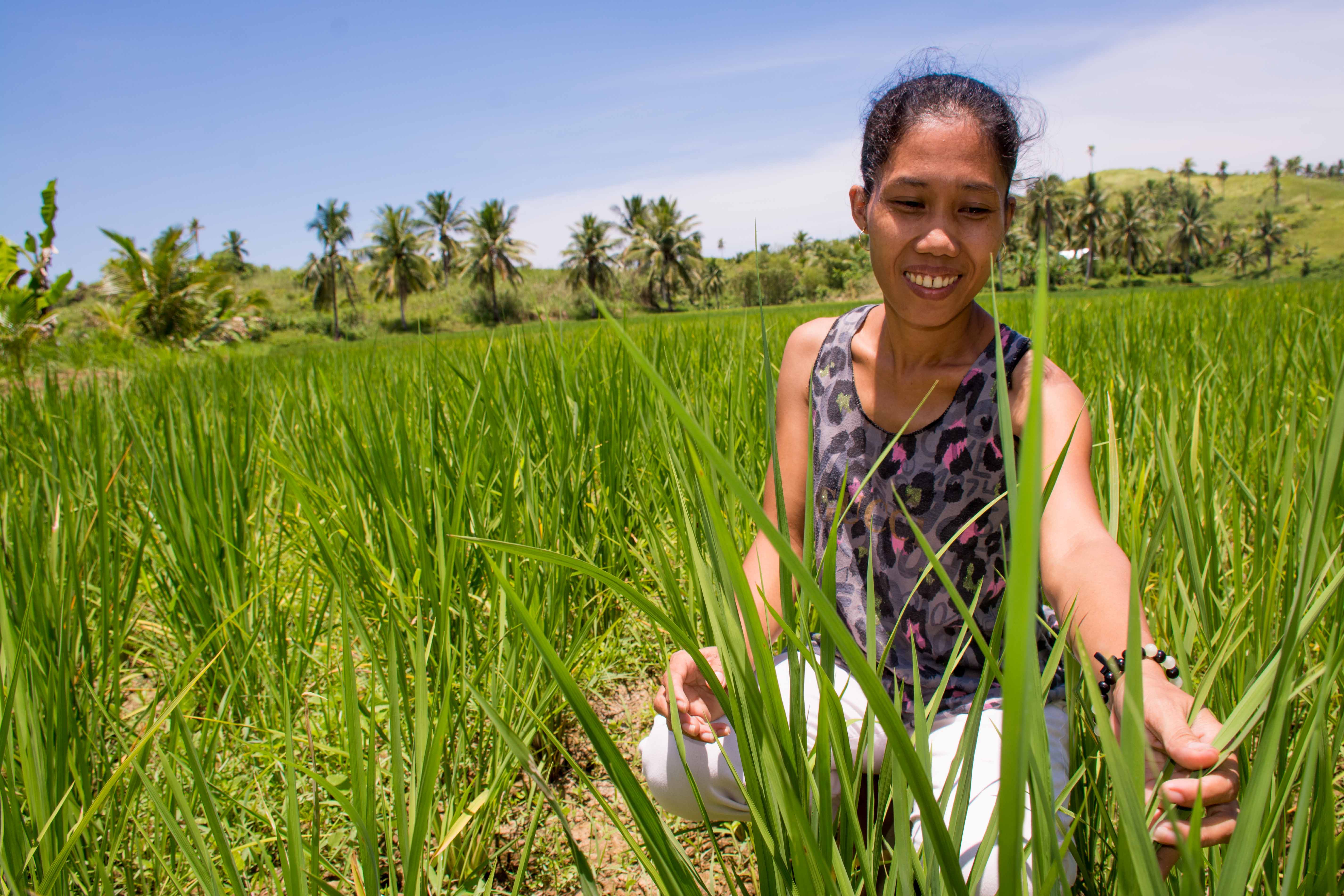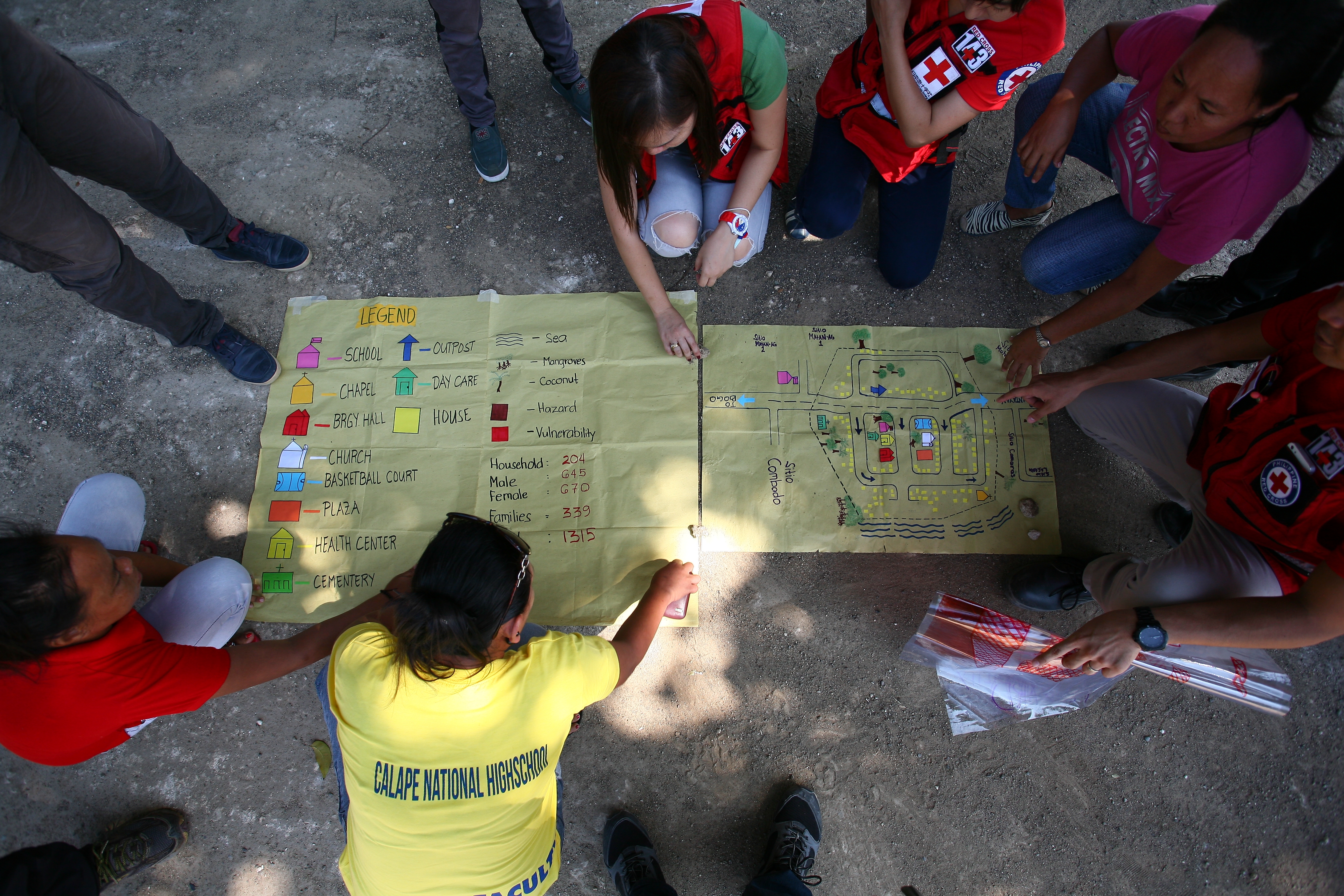Empowering communities after Typhoon Haiyan
When Typhoon Haiyan tore across central Philippines in November 2013, it affected millions of people, and left many displaced from their homes. The destructive forces of the storm devastated large parts of the country’s low-lying coastal farming and fishing communities, destroying the livelihoods of some of the nation’s poorest people.
In response, the Spanish Red Cross launched an ongoing project to support the most vulnerable families, and make them more resilient to natural disasters in the future. The recovery programme provided safe shelters to those who had lost their homes, offering materials, tools, and technical and financial support to affected communities so that they could reconstruct their houses in a more disaster-resistant way. In total, 2,900 new homes were built, and a further 4,200 houses were renovated. Cash grants of PHP 10,000 also enabled 4,531 people who had lost their source of income to regain their livelihoods by resuming farming or fishing activities, setting up new businesses, or diversifying their commercial activities. Enabling families to create sustainable livelihoods is crucial when it comes to building resilience, because sustainable livelihoods reduce families’ vulnerability to disasters, food insecurity and poverty – at the same time it empowers them, gives them personal dignity and creates safer and more resilient communities.

Young people were also targeted through youth vocational programmes. “This training is my opportunity to find a different job; better than those I’ve been having until now. My family could have never afforded the costs, so this is the only opportunity I had to go to the school. My plan, when I finish, is to stay at the Boracay Hotel and work on my island”, says 17-year-old Shanderlyn Nadate.
As for improving the resilience of community infrastructures, the Spanish Red Cross supported local actors to rebuild pedestrian bridges, canals, and public buildings such as schools and health centres, as well as to repair irrigation systems. These initiatives created 3,170 jobs within the community, and more than 1,340 carpenters were involved in constructing houses, 80% of which received training in anti-typhoon construction techniques.
Following natural disasters, the risk of diseases spreading is often heightened. To mitigate this, the Red Cross implemented hygiene promotion activities across all aspects of the recovery programme. Information on appropriate sanitation, as well as capacity building around healthy and hygienic habits, were incorporated into the construction of latrines for 1,450 houses. Approximately 9,000 families were reached with information sessions and hygiene kits, and access to drinking water was supported through the distribution of 4,000 jerry cans and the rehabilitation of 21 water pumps.

Just one year after Typhoon Haiyan made landfall, the resistance of the new houses and the disaster preparedness of the population were put to the test when the super-typhoon Hagupit swept through the same communities. This time, the typhoon had much less devastating consequences for the population, due to a combination of meteorological factors and early humanitarian action. Leaning on the lessons from Haiyan, the population were able to better prepare for the typhoon. Farmers reduced the agricultural damages by quickly harvesting their crops before the storm hit, volunteers were effective to mobilise and pre-position supplies and communication equipment, and perhaps most importantly, a mass evacuation of the population helped reduce the casualties dramatically.
Basic information
Country
Philippines
Duration
2015
Partners
Spanish Red Cross

